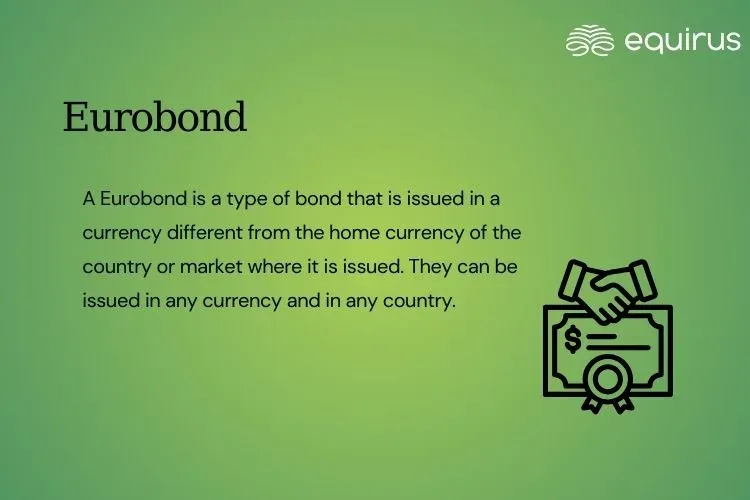Eurobond

Key Highlights
-
A Eurobond is a type of bond that is issued in a currency different from the home currency of the country or market where it is issued.
-
Key characteristics includes currency, issuance location, issuer, investor base, format and liquidity.
What is Eurobond?
A Eurobond is a type of bond that is issued in a currency different from the home currency of the country or market where it is issued. Despite the name, Eurobonds have nothing to do with the euro or Europe specifically- they can be issued in any currency and in any country.
For example, a bond issued in Japan and denominated in U.S. dollars is a Eurobond.
Key Characteristics
-
Currency: Denominated in a foreign currency (e.g., a dollar-denominated bond issued outside the U.S.).
-
Issuance Location: Issued in countries outside the jurisdiction of the currency in which it’s denominated.
-
Issuer: Can be governments, corporations, or international organizations.
-
Investor Base: Targeted at international investors.
-
Format: Typically issued in bearer form, meaning ownership is determined by physical possession of the bond.
-
Liquidity: Generally highly liquid and traded in over-the-counter (OTC) markets.
Why Issue a Eurobond?
1. Access to international capital: Issuers can reach a broader base of investors.
2. Favorable interest rates: Some markets may offer lower borrowing costs.
3. Currency matching: Useful for multinational companies that earn revenues in a foreign currency.
4. Less regulation: Often issued in markets with lighter regulatory requirements than domestic markets.
Types of Eurobonds
1. Eurodollar Bonds: Denominated in U.S. dollars but issued outside the U.S.
2. Euroyen Bonds: Denominated in Japanese yen but issued outside Japan.
3. Euro-euro Bonds: Denominated in euros but issued outside the Eurozone.
Example
If an Indian company issues a bond in London that is denominated in U.S. dollars, that bond is considered a Eurobond. The name reflects the cross-border and foreign-currency nature of the bond, not the continent.
Risks Involved
-
Currency Risk: If investors or issuers deal in different currencies, exchange rate fluctuations can affect returns or liabilities.
-
Political and Regulatory Risk: Varies by the jurisdiction of issuance.
-
Interest Rate Risk: Changes in global interest rates can impact bond prices and yields.
